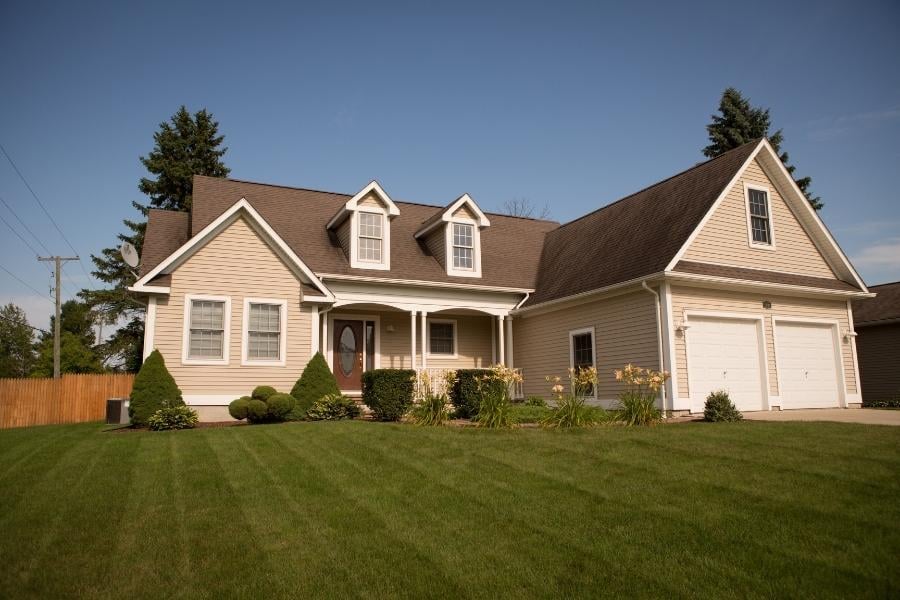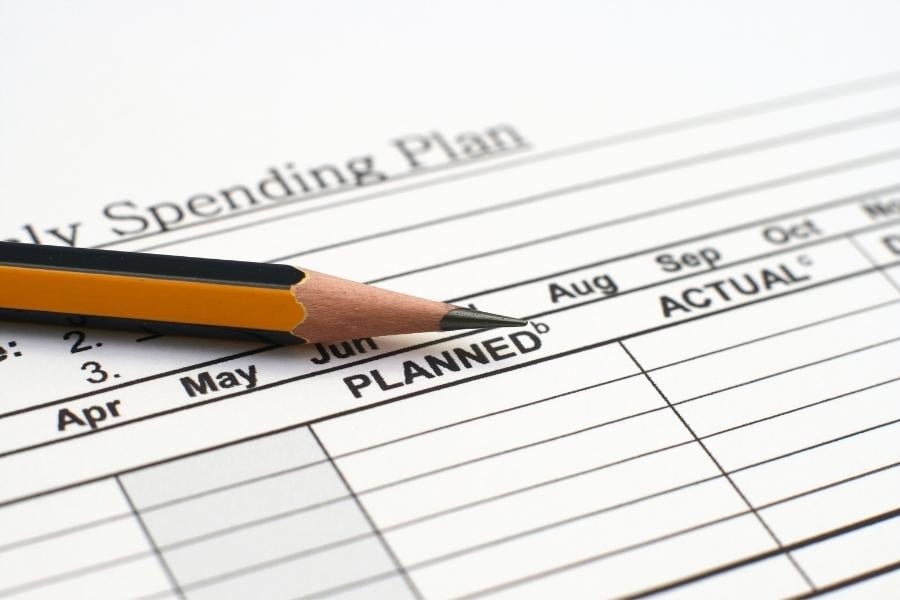Barracks to Bedrooms: How to Save Money and Buy Your First Home
You did it – you joined the world’s greatest military out of pride, selfless service, and a desire to better yourself. Maybe you did your time in the barracks, or maybe this is your first duty station. Now you’re married and ready to reach another huge milestone: home ownership.
By the way, maybe you thought of renting a home. Isn’t it better to let someone else worry about mortgages and maintenance?
Not so fast. Homeownership is one of the only stable, predictable, and guaranteed paths to financial freedom. Analysts assess the national home price increasing by at least 5% annually since the 1980s (Source: FRED Economic Data), and some markets have grown even more recently. Texas, for example, is in a real estate race to the top, with the average home sale price increasing almost 18% last year.
Even if it isn’t a windfall, you’re still looking at a financial return that even the Thrift Savings Plan can’t consistently hit. Let’s say you enlisted at age 20, followed all the steps in this article, and bought your first home in beautiful Fort Bragg, North Carolina. Using the BAH calculator on our home listings, you know that you can afford a home in the $175,000 range.
That’s a lot. But one of the advantages to being in the military is access to the VA Loan and guaranteed money to make mortgage payments. You’ll see how both are amazing in a minute.
You retire at 40 and have your whole life ahead of you. You’ve PCS’d a few times and rented the home out for the past 16 years… meaning someone else has paid your mortgage for you while it gained 5% yearly. The sale value of that home when you retire?
$464,327.10. You more than doubled your investment. And had a steady flow of cash the whole time from renting the property. Now you have a nice stack of cash as you ride into the retirement sunset, or you can let the home value continue to appreciate as you enjoy your newfound freedom.
How?

Saving for Your First Home
Look, no one wants to talk about saving. There are tons of get-rich-quick crypto schemes out there. Traditional saving for a goal is boring. But it works and opens the door to a more reliable opportunity like 3x, 5x, or 10x your money by investing in a home. Here’s how to make it work.
What kind of house do you want?
These first two steps to financial freedom happen simultaneously, but we’ll cover this one first. Bottom line, knowing the kind of house you’re in the market for will set upper and lower limits on your budget. Some options include:

Image from Canva
Single-Family Home
This is the classic starter home, probably in a newer suburban development, and generally runs right down the middle of most budgets. What it lacks in overall space and uniqueness, it more than makes up for in rentability (these rent out within days in a military community), ease of upkeep, and predictable appreciation value. Buy this if you’re thrifty but looking for some space to make your own.
Duplex
These are usually cheaper and smaller than a single-family home. What it has that the single-family option doesn’t, however, is cash flow potential. Let me explain: a duplex is a single structure on a plot of land, and you own both. That structure is split down the middle into two homes, either side-by-side or stacked.
What do you do with that second home? Rent it out and have someone else pay your mortgage. That’s right. While you’re paying the mortgage on the property, say $1,400/month in a mid-tier market, you’re also charging your housemate rent at a minimum of $1,500/month and up to $1,800. That means you’re paying none of your hard-earned money into your mortgage and pocketing $100 to $400 with no effort.
Townhouse
The townhouse splits the difference between the first two. A townhouse is a series of homes connected by shared walls on property that an individual homeowner does not own – think of it as owning an apartment, but the building is owned by someone else. These give you the advantage of affordability and ease of renting at the cost of a bit of space compared to a single-family home.
 Image from Canva
Image from Canva
How much do I need to save?
This is the other important question, in addition to the type of home, and the best way is to use the tools Uncle Sam (and MilitaryByOwner) gave you. Let’s assume that you’re going to get a VA loan and won’t need a down payment (sounds crazy – we’ll tell you all about it in a minute). You’re also in the market for a single-family home, our middle-of-the-road option.
This means you’ll need rough savings equal to three months of the mortgage payment, but ideally, six months to cover emergency repairs or expenses. The great news about being in the military is that you have a guaranteed, stable paycheck for as long as you’re serving, so you need way fewer savings than your civilian friends.
First, find what duty station you’re moving to because all places are not created equal. Then, depending on what home you’re looking for, determine how much of that BAH you will be putting towards a mortgage and multiply it by three- since, as we said, a general rule of thumb is to have three months’ worth of mortgage payments in savings. Broadly, an approximately $1,500/month mortgage means you’ll need $4,500 available savings to cover post-purchase mortgage payments and any minor home improvements or customizations you may want.
We’ll look at two examples: one in a more expensive area and one that isn’t.
Beautiful Joint Base Myer-Henderson Hall, right next to our nation’s capital, will get you and a spouse a whopping $2,355 in 2022 as an E4. This is a hefty chunk of change, but since the area is expensive, a lot will get eaten up by your mortgage. Since you’re looking at a single-family home on the more affordable side, let’s say you’ll be paying $2,000/month for your mortgage – you only need $6,000 in savings to buy this home with a VA loan comfortably. Compare this to your civilian friends, looking at a typical $10,000-$15,000 minimum savings for a down payment in even the cheapest locations.
Fort Polk doesn’t have the urban splendor of a Fort Myer-type location, but it has miles of untouched wilderness and is an outdoorsman’s dream location. Not only that, but it is some of the most affordable housing and reliable post-PCS rental market. That’s great because the same family is getting $924/month in BAH – way less than Fort Myer, but your mortgage is also only $800/month – meaning a required savings of $2,400, meaning you can save for a house twice as fast as your battle buddy up north.
We are making it happen. We now know that you and your spouse are looking for your first single-family home on an E4 budget and, to make it easier, we’ll split the difference between our two BAH examples and say you’re getting $1,500/month in BAH and have a mortgage of around $1,475. This is a reasonable expectation of median, military-area mortgages as Federal Interest rates climb (that means the sooner you lock in a mortgage rate, the better – they’re only going to rise higher). This means you’re looking at a budget need of $4,425. Doable, but it will be tight with that BAH, so you’ll need to plan how you will adjust your lifestyle to meet your budgeting needs.
 Image from Canva
Image from Canva
Practical Steps to Building Your Savings Account
Plan Your Savings Budget
You know what you need, so now is the time to look at your monthly expenditures and how they add up. First, look at everything mandatory: car notes, groceries, gas (which is getting more expensive every day), and anything else. This gives you a baseline required budget and, next to your savings need, will provide you with an idea of the difference and how fast you can make it up.
Cut Spending
This is everyone’s least favorite step, but it’s important and won’t last forever. Slash your spending. Friday nights at the bar, your daily Monster and dip habit – cut it out at least for a few months. That will add up faster than you think and speed up the path to homeownership. You can always start spending on these things again, but you may find you don’t want to. We’ve also got some great tips on reducing expenses.
Pay off and Avoid Debt
This is the one thing we recommend prioritizing over home buying, but with careful planning, you can knock it out quickly and move on to saving for your dream home. Credit cards, student loans, whatever – the interest on these will add up much faster than your home value will rise, so getting debt under control is your priority. Look into the Servicemember’s Civil Relief Act to see if any options exist to reduce your debt interest because of your service.
Congrats. You did it! You saved up $4,425 by paying off your credit cards early and cooking at home for a few months just in time to work with us and find your dream three bedrooms, two baths with a perfect yard for your dog, and (future) child. And, just as important as your immediate happiness? You’ve invested in your and your family’s financial future.
The VA Loan
Wait a minute. We talked about the VA loan a few times and how you won’t need a down payment... what’s the deal? Well, as a reward for your military service, the federal government will guarantee a loan with your mortgage lender and require zero money down and generally a much lower or nonexistent credit score – perfect for you and your family to get your life started. We’ve got more information on this fantastic opportunity here:
- What Is a VA Loan?
- Your Step-by-Step Guide to Using the VA Loan
- Understand Your VA Home Loan Benefit
Your financial future starts here. Savings, loan advice, real estate market outlooks wherever you PCS – MilitaryByOwner has you covered every step of your military journey and adventure in real estate investing. Because it isn’t just an investment in a house, you’re investing in a home, and making a house a home is the cornerstone of our mission.





